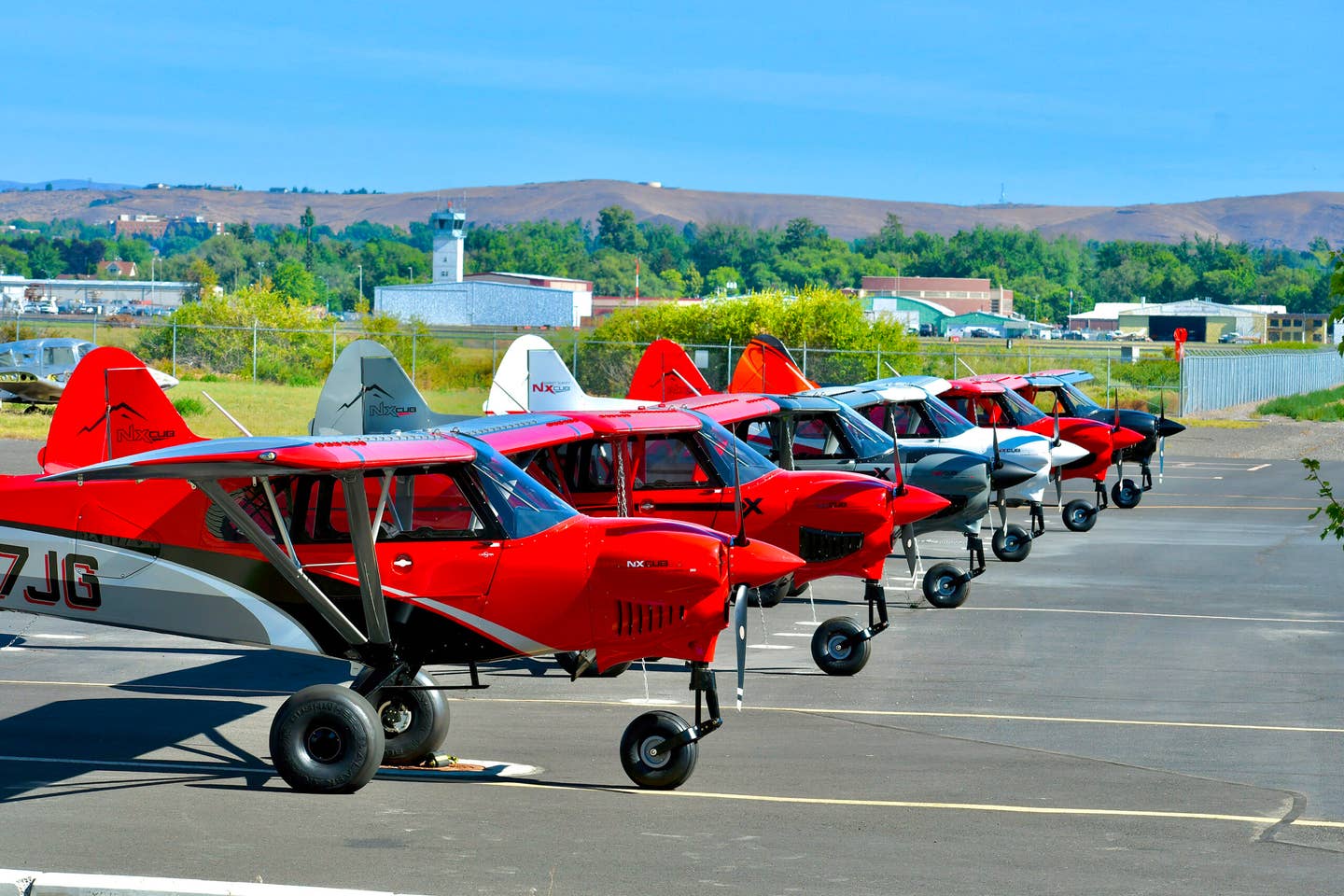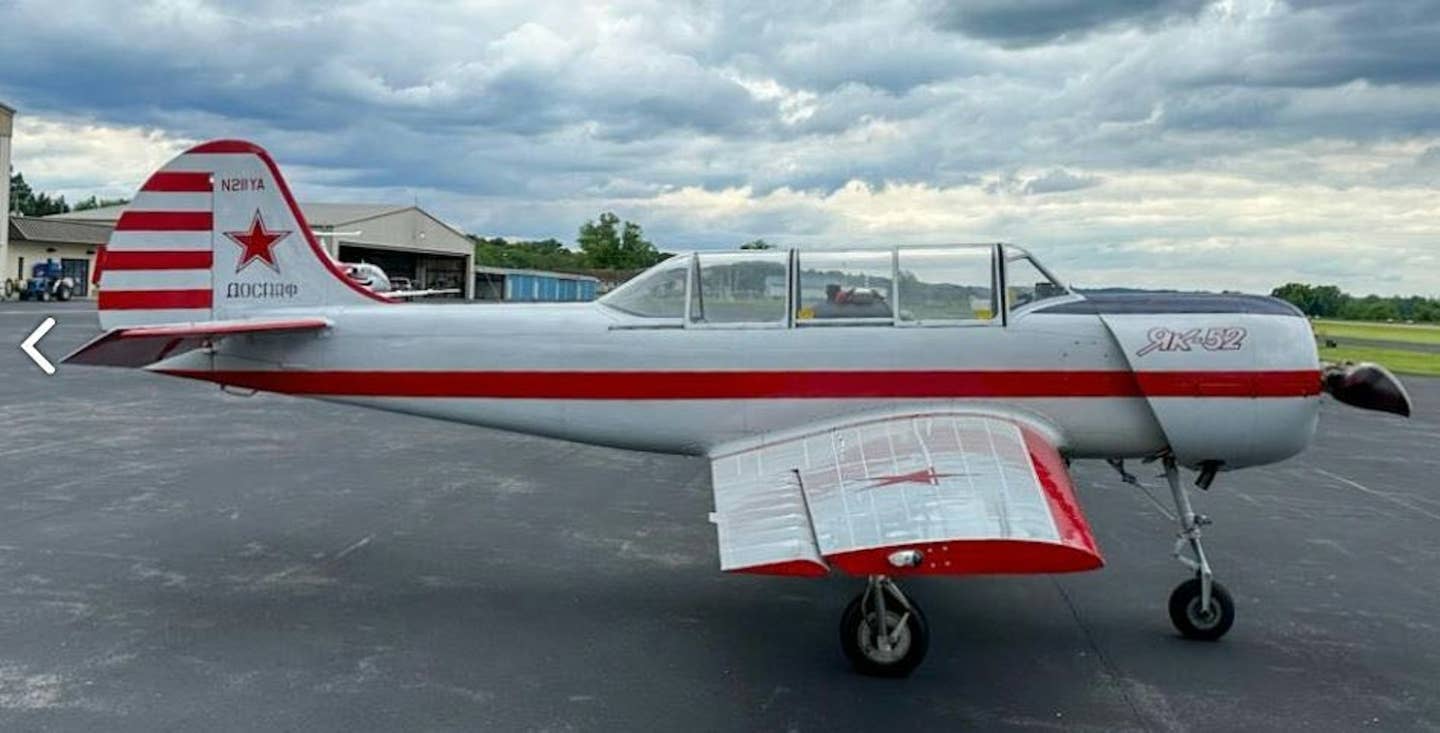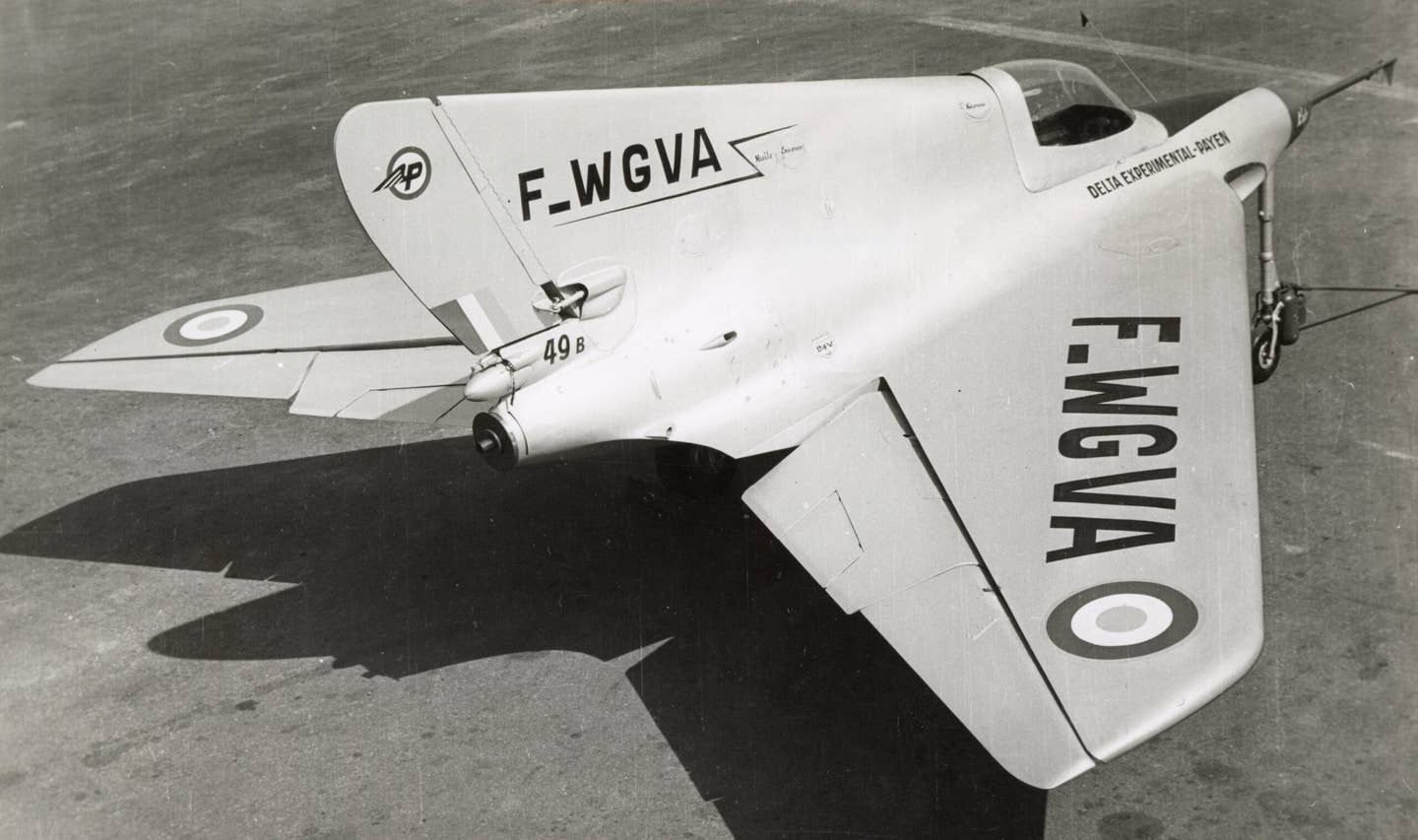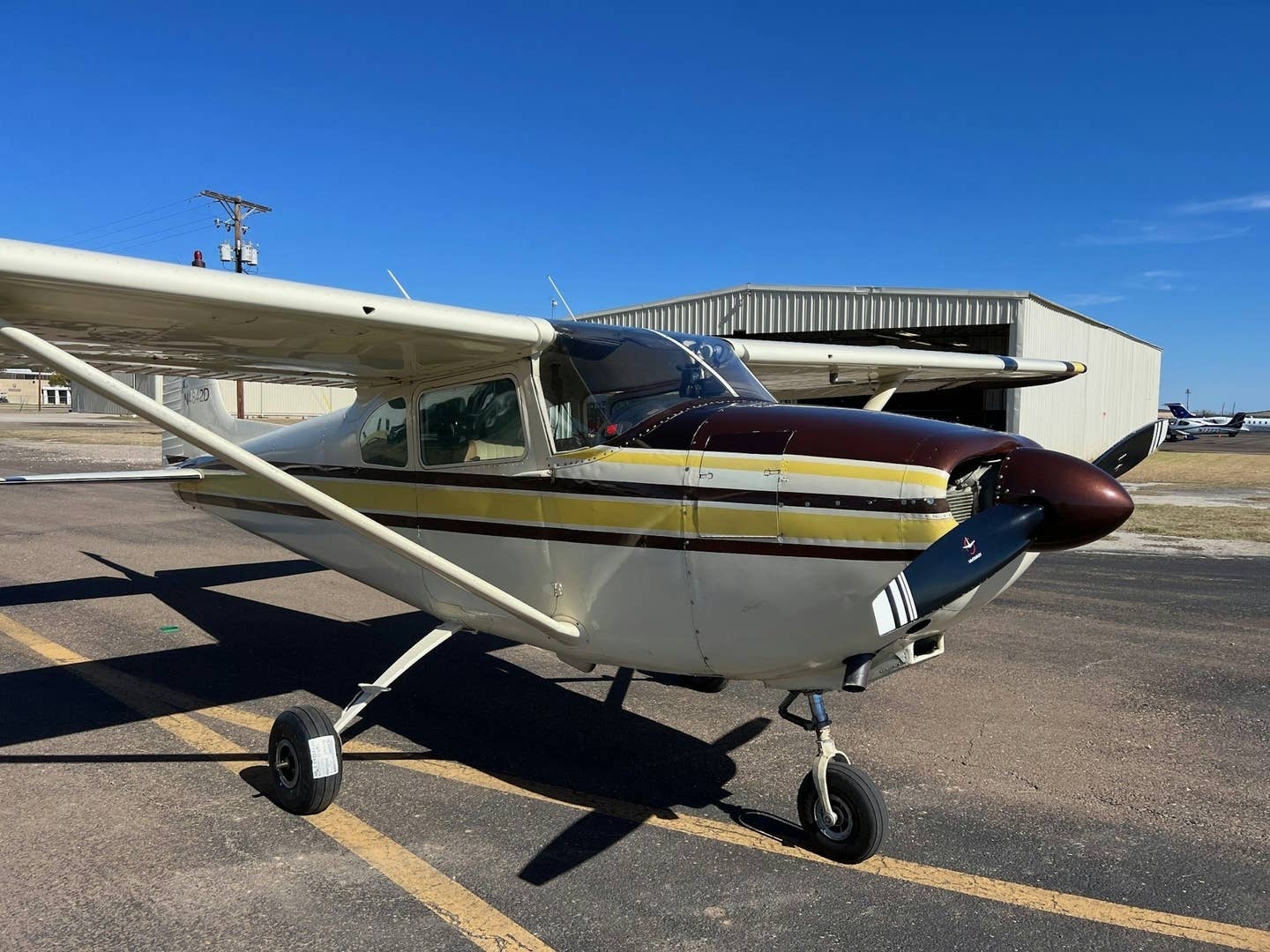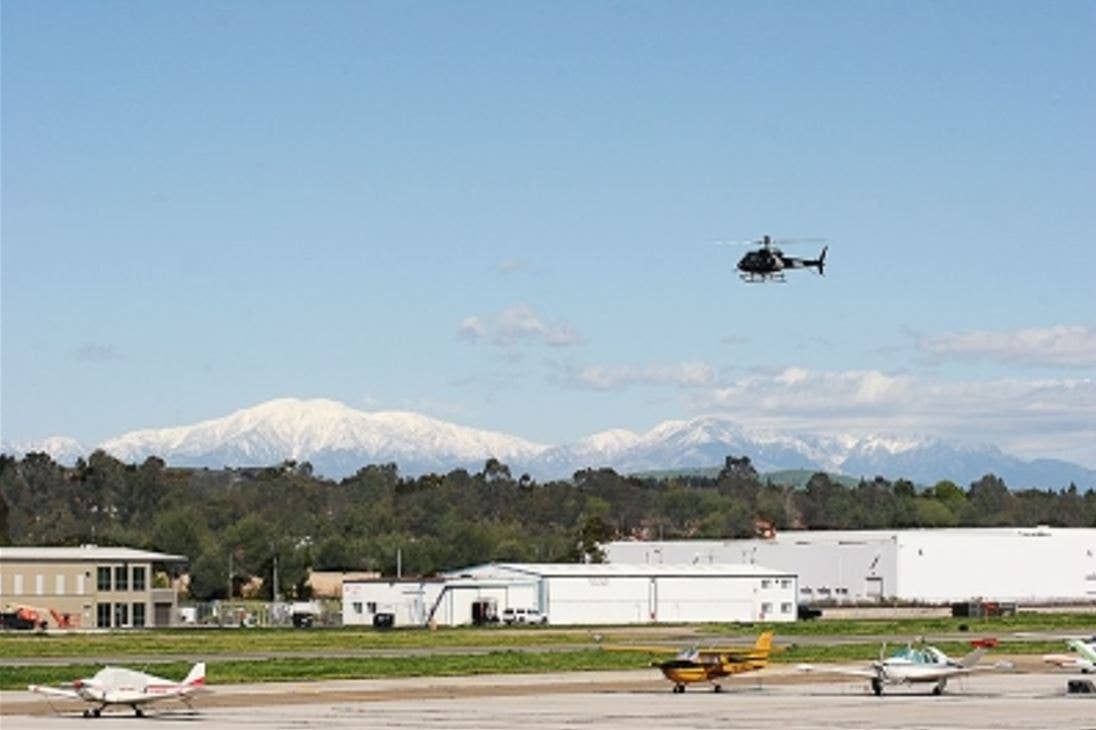We Fly: Diamond DA50 RG, the High-Performance Retract That Shines
The single-engine piston, diesel-powered Diamond DA50RG with a Continental CD-300 engine sets the bar for the category. We put one of the first ones to the test in Austria.
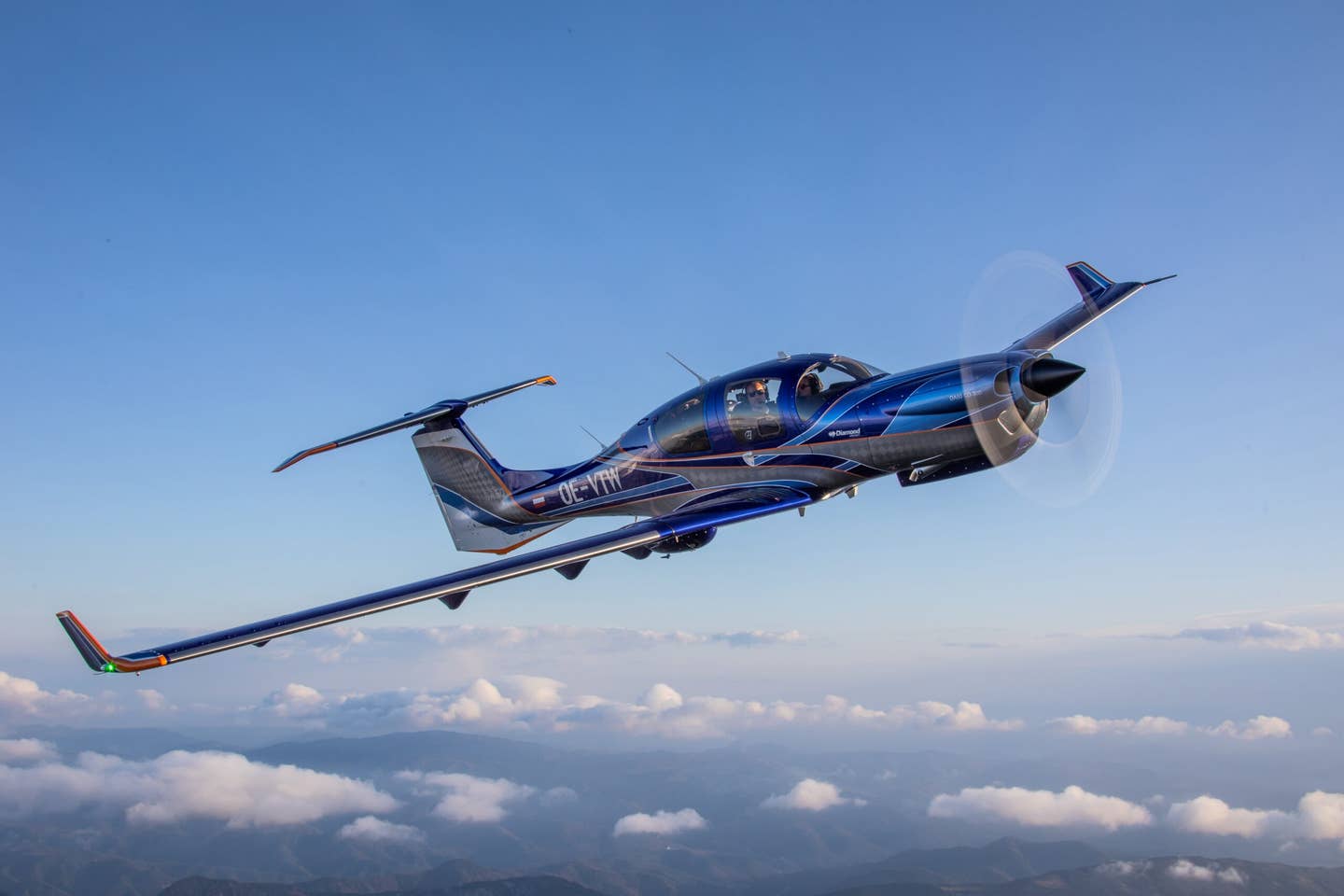
The Diamond DA50 RG received its FAA type certification in July 2023. [Credit: Jim Payne]
The hills surrounding the Bodensee roll quickly into mountains as we depart Friedrichshafen Airport (EDNY) in southern Germany. Though I’d made it to AERO on the banks of the massive lake bordering Switzerland and Austria several times before, this marks the first time I’m taking off under my own pilotage.
The icing on the lebkuchen? I’m with Martin Scherrer, head of flight operations and training for Diamond Aircraft—and we’re climbing away in the new Diamond DA50 RG. We’re speeding towards Diamond’s EU home of Wiener Neustadt, Austria, just south of Vienna, but we have cameras on board the DA62 that’s chasing us. We plan a couple of special stops along the way—those mountains keep soaring up ahead—the German Alps. It would be so wrong not to twirl a couple of turns around a chateau—Neuschwanstein, that inspired a Disney castle, for one. We’ll also tuck into the deep valley that hosts Hallstatt, on the edge of Hallstätter See, often voted the prettiest town in the world for its postcard-envy setting.
But the view from above ranks as the most stunning. As we fly over Salzberg, I can’t help but hum a few bars from the Sound of Music... with a twist: “I am sixteen going on seventeen... time to get my pilot’s license...”
Delivered
While the sweet and swift retract has been type certificated under the European Union Aviation Safety Agency (EASA) since September 2020, FAA validation came nearly to a halt during COVID. The company has delivered 38 into EASA-land while awaiting certification stateside. Diamond anticipates that to come through this summer—and one of the production models departs soon for a U.S. tour in coordination with that milestone.
No small part of the validation process lies in the ac- ceptance of the new Continental CD-300 jet-A burning diesel engine under the DA50 RG’s complex cowl, which looks as though an engineer blew globes in hot glass—fiberglass—and stuck them in place to shroud the massive powerplant. We’ll see glimpses of that engine during our walkaround, but during our visit to the production line a couple of days later we’ll get to contemplate its intricate architecture as it sits on serial numbers 40 and 41 about to leave the line for flight testing.
The FADEC-controlled CD-300 is the largest Continental diesel in the series to make it to EASA certification—and all 560 pounds of it comprise a substantial percentage of the DA50 RG’s empty weight. It potentially creates a long view down the nose for the pilot—but instead of being in the way, I found it helped me gauge my sight picture both during high work and landings.
WATCH: We Fly the Diamond DA50 RG
For pilots seeing the big CD-300 for the first time, it takes a moment to orient yourself. The CD-300 is liquid-cooled rather than air-cooled. Plus, a diesel engine is self-igniting, meaning there are no magnetos—so the combustion chambers must be heated to a certain temperature and maintain that baseline in order to light off. From the aircraft flight manual: “The bypass cooling circuit (cabin heat exchanger) is always active. The short cooling circuit is active at low cooling temperatures.” This ensures that a cold engine will warm up quickly, and also creates a safety benefit, using coolant rather than exhaust gas. When the coolant temperature reaches 183 degrees Fahrenheit, the external cooling circuit is activated by a valve.
Look at the large intercooler radiators on the nose and follow the orange ducting to that system inside—indicating that the CD-300 features a turbocharging system as well, driven somewhat traditionally by exhaust gas collected from a manifold. Excess gases bypass the turbine via a FADEC-controlled wastegate. A pressure sensor behind the compressor allows FADEC to calculate the correct position of the waste gate’s valve.
Diamond has had a long path to certification on its retract—15 years—because of the issues plaguing early engine partner Thielert Aircraft Engines GmbH, which originally produced the Centurion line from which the CD-300 was derived, generally speaking. Thielert went public in 2005, but by 2008 had declared bankruptcy, with its founder Frank Thielert jailed during the fracas. Centurion Aircraft Engines formed from that basis, and Continental Motors purchased those assets, bringing the 300-hp engine in development under the CD-300 moniker.
And there are interesting times ahead as the CD-300 enters service beyond the EU. The in-family engine OEM Austro Engines has had success in the DA42 and DA62, and we noted a couple of operational distinctions between the AE330s in the DA62 when we flew it.
A. The Garmin G1000 NXi suite features ESP and a blue Level button in the lower center of the instrument panel, which returns the aircraft to straight and level on autopilot, maintaining pitch and roll modes when pressed.
B. The fuel system is unique to the DA50 RG and sup- ports the operations of the CD-300 diesel engine. It draws from the left wing tank through a mechanical feed pump into the injectors, which deliver only a portion of that fuel to the combustion chambers. The unused diesel returns via a common fuel line to the right tank, or as determined by the fuel selector position.
C. The load level is managed by the power lever, which meters fuel required, controls prop pitch and feathering, and adjusts the twin turbochargers in accordance with demand, given the altitude and flight condition.
D. The front seats can recline somewhat, but proper pedal position is adjusted electrically on a long rail that accommodates a wide range of pilot sizes.
E. The optional flight management system keypad tucks into the center armrest console and must be stowed for takeoff and landing.
Fuel System
It takes a dedicated system to deliver fuel to a CD series engine, one that’s plumbed and pumped quite a bit dif- ferently than the standard left-right-both (sometimes) that gasoline engines in light singles use. There’s a tank in each wing, but instead of thinking of them as left and right, they are the main and the aux.
The powerplant draws fuel from the main tank in the left wing through an electrical feed pump to the engine-driven mechanical pump into the injectors, which deliver only a portion of that fuel to the combustion chambers. The unused diesel returns via a common fuel line to the main tank via the aux tank for heat exchange, or as determined by the fuel selector position. Normal on the fuel selector draws from the main; the Emergency position takes fuel directly from the aux tank. The Off position cuts off the fuel supply entirely.
Since you’re drawing from the main and only returning part of that fuel to that tank, a fuel imbalance will grow beyond the airplane’s ability to maintain lateral balance. Before the 9-gallon limit, the pilot turns on an electric transfer pump to move fuel from the right wing to the left—but not during takeoff and landing.
Flight Controls
My overall impression of the airplane’s handling finds a good balance between the nimbleness you desire for hands-on flying—to tackle a crosswind, for example— with the stability to make it quite comfortable on a long cross-country flight off the autopilot.
The length of the stick and its connection to the rest of the flight control system may have a lot to do with this. I move regularly between aircraft that utilize a yoke and one with a center stick, and find little transition time is needed for me—but the yoke-controlled aircraft is more of a cross-country machine, while the one in which I use a stick is highly maneuverable.
The stick in the DA50 RG is also a bit taller than the one I usually fly with, putting the push-to-talk trigger-style button and electric trim split rocker switch a wee bit of a stretch for my short thumb if I rested my left arm on my leg. It took me a couple of flights to find the sweet spot—and maybe because this was an almost-confirming prototype, it explains why the stick in the DA62 I also flew during my visit felt a bit shorter and thus just slightly easier to find that spot on.
However—when we got out of the cross-country mode on my first flight from EDNY to LOAN and into a bit of stationkeeping, I really appreciated the stick and its direct feedback—in a straight line to the control cable bellcrank rather than the up and down movement of the yoke. These are fine details, but I think a clear reason why some pilots prefer a given airplane over another.
The idea came home to me the next time I got into the TB-30 model I sometimes fly—that direct control gives confidence in both aggressive and finely-tuned maneuvering flight. In the DA50 RG, it’s somewhat dampened by the aileron actuation—and a bridge between worlds.
Therefore my final assessment makes sense—that if you are looking for a solid performer that makes you feel like you’re still flying an airplane rather than pushing buttons and managing systems, the DA50 RG will resonate with you.
Diamond aircraft take their DNA from the gliders that formed the core product line when the Austrian OEM first launched its H36 then the Super Dimona HK36 in 1980 (see “The Diamond Story”). One out- come? Advanced aerodynamics in the wings add significantly to the DA50 RG's excellent low-speed handling characteristics and reduced approach speeds.
For example, the DA50's flaps consist of two pieces—an inner part attached to the center wing, and the outer part to the wing itself. The sections are independently pushrod controlled, and they slide out and back to produce two tiered channels for the air to flow through, ensuring adhesion to the upper surface of the flap along with the increased camber for the wing overall.
Cross-Country Cruising
The DA50 RG has been one of the first new single-engine retracts to hit the category—with the Pipistrel Panthera also currently seeking approval beyond EASA—since the FAA granted type certification to the Mooney Ovation 3 in 2007. Besides looking great, there’s one solid reason to put the gear in the wells—speed.
In cruise, that speed comes to call. The airplane has an operating altitude maximum of 20,000 feet, but most pilots will flight plan below the oxygen-required flight levels—so it’s a good thing that the DA50 RG finds a sweet spot at 10,000 feet msl, where it easily makes its 172 ktas book speed. We conducted formation work for much of our 2.3 hours from EDNY to LOAN at lower altitudes, like 7,500 feet, and ticked off true airspeeds between 160 and 167 ktas at 90 percent load.
Diamonds burn diesel for reasons of efficiency and economy—as well as the ability to source fuel virtually anywhere—and so we also pulled the CD-300 back into economy mode. At 60 percent load, 5,500 feet msl, and ISA plus 8 Celsius, we made 156 ktas, above book—and using 10.1 gph. Pulling back to a loitering speed of 119 ktas and 45 percent load at that altitude and condition, and fuel flow drops to 7.9 gph. Our precise Austrian friends have built on this efficiency philosophy throughout their model lineup, and the DA50 RG fits right in.



On Landings
Sight picture on landing feels straightforward not only for a pilot transitioning up the Diamond food chain, but also from other four-seat fixed-gear aircraft like high- wing Cessnas and the PA-28 series. With a substantial engine out front, you have cowl references to use while determining your height above the runway (the DA50 RG definitely sits tall on its gear) without cheating a glance to the side. I found it easy to find the mains for a normal landing, as well as during the specialty take- offs and landings we performed.
Approach speeds fall firmly where you’d expect them to in the category, and the runway at Wiener Neustadt—a VFR-only airport at 896 feet msl—is 1,067 meters (3,500 feet) long, which the airplane handles easily, flaps or not.
In fact, the no-flap landing demonstrates the power of the flaps, but also the general characteristics of the wing itself. Maintaining a higher approach speed of 94 knots indicated (versus 85 kias with takeoff flaps and 77 kias with full flaps) translates into more runway used—but still comfortably within touch-and-go territory on that 1,000 meters of pavement with a ground roll near book of half the runway distance (1,700 feet) at our lighter takeoff weight (roughly 3,950 pounds, about 500 pounds below the max takeoff weight of 4,407 pounds).
A short-field landing test with full flaps easily placed us with a ground roll of less than 600 feet—the 17 knots less for VREF plus good hydraulically actuated disc brakes combined to improve pilot confidence when taking the DA50 RG into airports of modest scale.


Haul the Whole Fam
We had four healthy adults and a week’s worth of show gear on board the DA50 RG on our departure from EDNY—along with full tanks. There was no compromise required. And the three seats across in the back made for a very comfortable ride for our colleagues enjoying the Alpine traverse. This was one of the more surprising revelations of flying the new model. The time to market with the right engine has meant time for Diamond’s engineering to dial out really important parameters—and the loading capability is one big one.
There is a combination of compartments in the rear cabin to work with, up to 198 pounds total.
For pilots completely satisfied with the DA50 RG’s range and carry-all flexibility, it could certainly prove a worthy companion for a long relationship. But with its honest low-speed handling enticing you to hand-fly more often, and a landing attitude common to both previous aircraft and what you might step up to—say, the Epic E1000 GX, Daher TBM, or Piper M-Series turboprops—it sets the stage for more real piloting to come.
DIAMOND DA50 RG
Price, as tested: $1,237,650
Engine: Continental Diesel CD-300
Propeller: MT Propeller MTV-12-D/210-56, wood with composite coating, three-blade constant speed
Horsepower: 300 hp maximum power, 272 hp maximum continuous power
Seats: 5
Length: 30.31 ft.
Height: 9.69 ft.
Wingspan: 44 ft.
Wing Area: 176.85 sq. ft.
Wing Loading: 24.91 lb./sq. ft.
Power Loading: 14.69 lb./hp @ 300 hp
Cabin Width: 4 ft. 2.8 in.
Cabin Height: 4 ft. 2.4 in.
Max Zero Fuel Weight: 4,189 lb.
Max Takeoff Weight: 4,407 lb.
Empty Weight: 3,175 lb. (depending on options) Max Baggage Weight: 165 lb./33 lb.; 198 lb. total separated into 4 areas/compartments Useful Load: 1,232 lb. (depending on options) Max Fuel: Usable: 49; Total 51.5 USG
Max Operating Altitude: 20,000 ft.
Max Rate of Climb, MTOW, ISA, sea level: 786 fpm Economy Cruise Speed at 60% Power: 156 ktas, 2,300 rpm, ISA, 10,000 ft., 10.1 gph
Max Cruise Speed: 90% Power: 172 ktas, 2,300 rpm, ISA, 10,000 ft.
Max Range: 750 nm with 30-min. reserve
Stall Speed, Flaps Up: 71 kcas @MTOW
Stall Speed, Full Flaps: 58 kcas @MTOW
Takeoff Over 50 Ft. Obs: (ISA, sea level, MTOW) 2,408 ft.
Landing Over 50 Ft. Obs: (ISA, sea level, max landing wt.) 2,224 ft.
This article first appeared in the June 2023/Issue 938 of FLYING's print edition.

Sign-up for newsletters & special offers!
Get the latest FLYING stories & special offers delivered directly to your inbox


